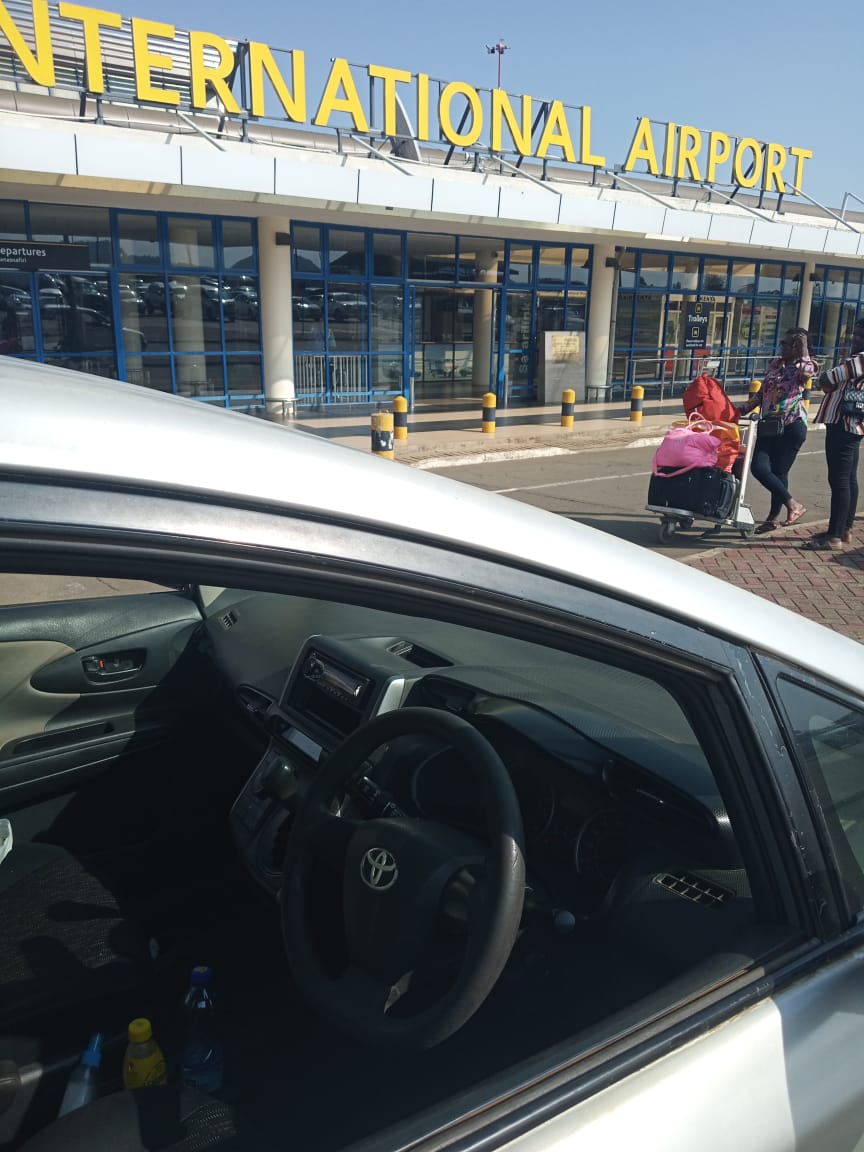Kisumu International Airport (IATA: KIS, ICAO: HKKI) is located in Kisumu, Kenya’s third-largest city and a major hub in western Kenya. It serves as the country’s fourth international airport and is the busiest airport west of Nairobi, ranking as Kenya’s third-busiest overall. Managed by the Kenya Airports Authority (KAA), the airport plays a critical role in connecting Kisumu to domestic and regional destinations, supporting both passenger and cargo operations. Below is a comprehensive overview, including its background, facilities, statistics, and the latest developments based on available information.
Background and Overview
- Location: Kisumu, Kenya, approximately 330 km northwest of Nairobi by air.
- Status: Fourth international airport in Kenya, following Jomo Kenyatta International Airport (Nairobi), Moi International Airport (Mombasa), and Eldoret International Airport.
- Significance: As the primary airport in western Kenya, it serves as a vital gateway for the Lake Victoria region, facilitating tourism, trade, and agricultural exports, particularly fresh produce like fish and horticultural products.
- History: The airport was upgraded to international status in 2012 after a major expansion that included a new terminal, extended runway, and improved facilities to handle international flights. It has since grown in importance for regional connectivity.
Facilities and Infrastructure
- Runway: The airport has a single runway (06/24), approximately 3,300 meters long, capable of handling medium-sized aircraft like the Boeing 737 and Airbus A320.
- Terminal: The modern terminal, constructed during the 2011–2012 expansion, supports both domestic and international flights with amenities such as check-in counters, immigration and customs services, and passenger lounges.
- Cargo Facilities: The airport has dedicated cargo handling areas, including cold storage facilities introduced in 2022 to support the export of fresh produce, particularly fish from Lake Victoria.
- Expansion Plans: A second phase of expansion, valued at 4.9 billion Kenyan Shillings (approximately $38 million USD), is underway. This includes:
- Construction of a parallel taxiway.
- Expansion of the cargo apron and associated facilities.
- Enhancements to arrivals and departure lounges, parking areas, a mezzanine floor, and passenger walkways.
- Other Amenities: The airport offers car rental services, nearby hotels (e.g., Imperial Hotel Express, Acacia Premier Hotel, Vittoria Suites), and basic passenger services like Wi-Fi and dining options.
Flight Operations and Statistics
- Flight Volume: As of recent data, Kisumu International Airport handles approximately 49 flights across 11 routes, connecting to 5 cities in 3 countries. The most popular routes are to Nairobi (multiple daily flights), Mara Lodges (for safari tourism), and select regional destinations.
- On-Time Performance (OTP): The airport has an OTP rating of 3.7/5 stars, based on flight departure data from the last 10 days (as of July 2025).
- Airlines: Major airlines operating at KIS include:
- Kenya Airways: Operates frequent flights to Nairobi and other domestic destinations.
- Jambojet: A low-cost carrier with regular domestic routes.
- Other carriers: APG Distribution System, Hahn Air Technologies, Hahn Air Systems, and FlexFlight operate select routes, primarily to Nairobi.
- Passenger Traffic: While exact passenger numbers for 2025 are unavailable, the airport’s status as Kenya’s third-busiest suggests significant traffic, likely handling hundreds of thousands of passengers annually. For context, smaller Kenyan airports like Moi International in Mombasa handle under 2 million passengers annually.
- Cargo Operations: Since January 2022, the airport has handled fresh produce cargo, leveraging its cold storage facilities to support exports from the Lake Victoria region.
Latest News and Developments
- Ongoing Expansion Projects:
- The Kenyan government is investing in further upgrades, including runway extension and a new cargo terminal with enhanced cold storage to boost agricultural exports. The cost of this project has not been officially disclosed.
- A 240 million KES (approximately $1.85 million USD) project for enhancing arrivals and departure lounges, parking, a mezzanine floor, and passenger walkways was reported in 2024. However, completion status remains unconfirmed, with some questioning whether the upgrades were fully implemented.
- Cargo Handling Growth:
- Since January 2022, Kisumu International Airport has expanded its cargo operations, focusing on fresh produce like fish and horticultural products. This aligns with the region’s economic focus on agriculture and fishing.
- The planned cargo terminal expansion aims to position Kisumu as a key export hub in East Africa, capitalizing on its proximity to Lake Victoria.
- Environmental Initiatives:
- The Kenya Airports Authority is implementing environmental measures across its airports, including Kisumu, to reduce their ecological footprint. Specific initiatives include energy-efficient infrastructure and waste management programs, though details specific to Kisumu are limited.
- The Kenya Airports Authority is implementing environmental measures across its airports, including Kisumu, to reduce their ecological footprint. Specific initiatives include energy-efficient infrastructure and waste management programs, though details specific to Kisumu are limited.
- Flight Compensation and Delays:
- Passengers experiencing delays or cancellations of 3+ hours on flights departing from Kisumu to EU airports or operated by EU airlines may be eligible for up to €600 in compensation under EC 261/2004 regulations.
- Passengers experiencing delays or cancellations of 3+ hours on flights departing from Kisumu to EU airports or operated by EU airlines may be eligible for up to €600 in compensation under EC 261/2004 regulations.
- Recent Flight Prices (as of July 2025):
- Round-trip flights from Kisumu to Nairobi range from $136 to $238, depending on the airline and booking time. Examples include:
- Kenya Airways: $136–$161 for round trips (e.g., July 26–28 or July 16–17).
- Hahn Air Technologies: $179 for a round trip (July 25–27).
- FlexFlight: $238 for a round trip (July 23–28).
- Round-trip flights from Kisumu to Nairobi range from $136 to $238, depending on the airline and booking time. Examples include:
Economic and Regional Impact
- Tourism: Kisumu International Airport supports tourism to the Lake Victoria region, including nearby attractions like the Maasai Mara (via Mara Lodges) and Ruma National Park.
- Trade: The airport’s cargo facilities enhance the export of perishable goods, strengthening Kisumu’s role in Kenya’s agricultural supply chain.
- Connectivity: With connections to Nairobi, Mara Lodges, and regional cities, the airport fosters economic integration in East Africa.
Challenges and Criticisms
- Infrastructure Delays: Questions have been raised about the completion of recent upgrades, such as the 240 million KES project for lounge and walkway enhancements, with some travelers noting discrepancies between reported and actual improvements.
- Limited International Routes: Despite its international status, Kisumu primarily serves domestic routes, with limited direct international flights compared to Nairobi or Mombasa.
- Capacity Constraints: The airport’s infrastructure, while improved, may still face challenges in handling peak traffic or larger aircraft, necessitating ongoing expansions.
Critical Analysis
While Kisumu International Airport has made significant strides since its 2012 upgrade to international status, its growth is somewhat constrained by its focus on domestic routes and limited international connectivity. The emphasis on cargo, particularly fresh produce, is a strategic move given the region’s agricultural strengths, but the lack of transparency around project costs and completion timelines raises concerns about efficient resource use. Posts on X and web sources suggest public interest in verifying infrastructure upgrades, reflecting a broader demand for accountability in Kenya’s public projects. The airport’s environmental initiatives align with global trends, but their impact remains unclear without specific data on implementation at Kisumu.












